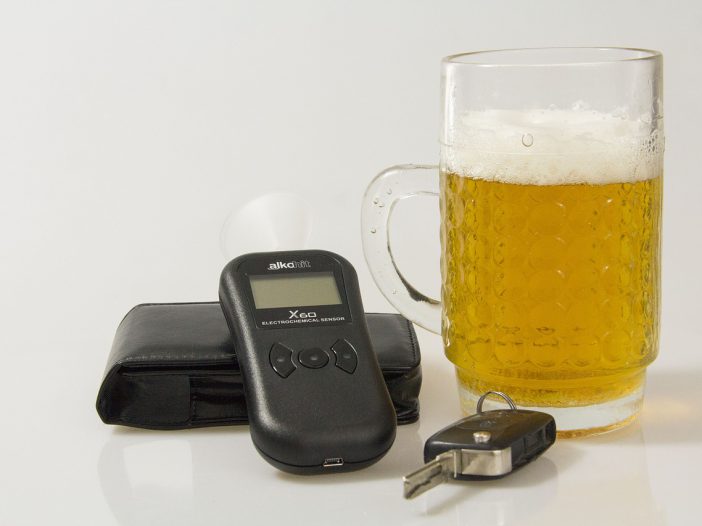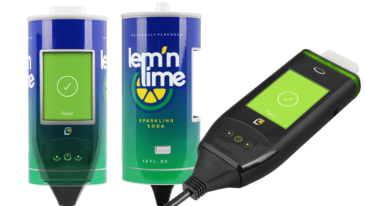
Blood Alcohol VS Breath Alcohol: Is There a Difference?
As you likely know, there are different methods that authorities and doctors use to measure a person’s blood alcohol concentration. For example, field test breathalyzers and interlock systems (or car breathalyzers) use breath alcohol to instantly estimate a person’s BAC, whereas blood alcohol tests take longer but produce more accurate results. But what exactly differentiates the two, and why is it relevant to you as a driver?
In the United States, the language used in DUI incitements typically refers to blood alcohol. However, if you’ve been court-ordered to install an interlock device in your vehicle, you should know why we take a breath alcohol concentration (BrAC) test and convert the results to blood alcohol concentration (BAC). Read on as we investigate the following:
- What are the biological differences between alcohol found in blood vs breath?
- What are the processes by which alcohol enters the blood or breath cycle?
- Which metric is considered more reliable by our judicial system?
- Which metric is more susceptible to variants, and how do these affect testing?
Blood Alcohol vs. Breath Alcohol: Is There a Difference?
Before we dive into the blood alcohol vs. breath alcohol debate, it’s important that we take a step back and understand the underlying biology. How does alcohol enter our bloodstream in the first place? Why does it affect our brains, our speech, our balance, and eventually materialize in our breath, our urine, and our sweat?
There are five steps to the process by which alcohol enters our bloodstream.
- Consumption – Once consumed through your mouth, alcohol travels down the throat through the esophagus and into the stomach.
- Entering the stomach – During the digestion process, some alcohol will be absorbed through the cell membrane in your stomach. From here it enters straight into your bloodstream.
- Gastrointestinal Tract – When drinking on an empty stomach, the alcohol drops directly into your small intestine, which is part of your gastrointestinal tract and is lined with hundreds and thousands of capillaries.
- Epithelial Cells – These capillaries are small hair-like matter and covered in epithelial cells. Their large surface area allows them to efficiently absorb any remaining alcohol into your bloodstream.
- Diffusion – The remaining alcohol is absorbed by a process known as diffusion. It transfers ethanol through the cell membranes of your small intestine and into your blood. This is known as a passive process; in that it happens automatically and does not involve an exchange of energy.
This explains why drinking on an empty stomach accelerates the effects of alcohol. It also clarifies why eating when drunk can reduce your blood alcohol concentration, hence why food is used as a means to make you “sober up faster.”
Going from the Bloodstream to the Lungs
Once in your blood, alcohol travels through your circulatory system and into your respiratory system like so:
- Circulation – To begin, ethanol enters your heart. From here, it is pumped all over your body via the circulatory system, which transports the alcohol from your brain (cue behavior changes due to a decrease in neuron activity) to your lungs and liver.
- Lungs – When ethanol reaches your lungs, it undergoes a secondary diffusion process, this time, through the cell membrane of your alveolar air sacs.
- Alveolar Air Sacs – Once positioned in the alveolar air sacs, it is converted into gas and released as breath.
- Liver – Your liver is where your body will metabolize alcohol. If alcohol enters it, your body will immediately recognize it as an alien substance and send it to the liver for filtration processing and removal. This is known as:
- Oxidation – The process by which alcohol is detoxified and removed from your blood and released. Through this process, some small particles of alcohol will leave your mouth or nose unaltered and detectable through exhalation.
- Escapists – No matter the strength of your metabolism, there will always be a tiny amount of alcohol that escapes the oxidation process. This alcohol will eventually leave the body, typically through urine or sweat.
Understanding Alcohol Content Calculations
The primary difference between BrAC and BAC is the concentration percentage. Simply put, the amount of alcohol measured in your breath will not be the same as the amount of alcohol measured in your blood. Although close, it’ll always be fractionally less, which makes sense— the absorption to breath is the second process of the entire process. By that point, some of the alcohol particles have already escaped to other forms.
- Calculating BAC – In the United States, the metric by which we measure BAC is g/dL with dL referring to 100 milliliters. It is the amount of alcohol measured in milligrams per milliliter of blood. Therefore, BAC = X milligrams of Alcohol per 100 milliliters of blood (mg/100 mL).
- Calculating BrAC – The typical metric for BrAC is g/210L. The difference between the two is calculated as roughly 0.5 times. So, if your BAC were 0.6, one might make an educated guess that your BrAC was around 0.3.
Applying the Conversion Calculation
This ‘conversion calculation’ is how a breathalyzer or interlock device reaches its conclusion. The device measures a breath sample and extrapolates it into a blood sample. For example, in the case of your interlock system, the device will require a 3-second exhalation. It would then calculate and convert the BrAC, and finally, present you with your BAC reading. Depending on where you stand in correlation to the legal limit, the device would either allow the electronics of your vehicle to function or prohibit them to start.
Percentage Difference: Reliability of Conversion Calculation?
In legal situations, there have been discrepancies between the blood alcohol tests vs. breath alcohol tests of a suspected drunk driver. But how do you convict someone if their BAC level finds them guilty but their BrAC alleges their innocence?
In the wake of such controversies, the NCBI performed controlled experiments to prove the validity of breathalyzers and the reliability of conversion calculations. They controlled the alcohol intake of 63 female participants. Each participant underwent:
- A breathalyzer test
- A blood sample test
- A urine sample test
The study found that there was barely any difference between the three tests. Each sampling and examination gave a near-accurate calculation of blood alcohol percentage. Based on these results, they concluded that as long as the instrument is used correctly, breathalyzers and interlock systems are incredibly accurate measuring devices for BAC.
They stated:
Blood alcohol concentrations (BAC) obtained from the offenders 0-303 min after the police had screened them for breath alcohol concentration (BrAC) were back-calculated (cBAC) to assess the accuracy of breathalyzer screening. All participants were in the alcohol elimination phase, and our analyses did not reveal any significant differences between cBAC and BrAC. After further testing, we found no significant differences between BrAC and BAC. These results confirmed the high reliability of breath alcohol analyzers for measuring BrAC as long as police officers perform the measurements according to the manufacturer’s instructions.
Despite this, it is important to know that inconsistencies sometimes do occur. Below, you’ll find some variable factors that most commonly cause inaccuracies in BrAC readings.
Variable Factors
There is a subtle but crucial difference in the way that BrAC and BAC react to variant changes.
Some key examples of this include:
- An Empty Stomach – Drinking alcohol on an empty stomach can easily increase and speed up the BAC, since alcohol drops directly to the small intestine where it’s processed faster. As a result, you can artificially manipulate a BAC test by introducing food into your system to ‘sober up’.
- Inconsistent Breathing – Some BrAC tests can be purposely manipulated through the inconsistency of breath. Breathalyzer tests performed during hypo or hyperventilation (either real or manipulated) would decrease their BrAC result. Studies show that in instances of hyperventilation, the recorded BrAC can be as low as 50% of the actual concentration. This is why the LCI interlock device asks for a steady 3 second exhale for any breath sample.
- Time Elapsed Since Consumption – As the amount of time since consumption increases, naturally, both the BrAC and BAC duly decrease. However, if a test is performed immediately after consumption, it could have the following results:
- BAC Immediately Following Consumption – Your BAC will be unchanged since there hasn’t been enough time for the alcohol to travel into your digestive system and for the process of absorption to take place.
- BrAC Immediately Following Consumption – Test would show an extremely high BrAC. The substance particles that remain in your mouth (adherent mouth alcohol), mingle with your breath and spike the breathalyzer reading.
Generally speaking, it’s believed that BrAC is more susceptible to variable factors than BAC readings, which is a primary reason why BrAC readings don’t count as evidence in the case of a DUI. It’s been suggested that, even if the US were to introduce a system of BrAC testing into DUI proceedings, it would still need to be coupled with the BAC to uphold the evidential standard.
In the Case of National Jurisdiction
The main difference between BrAC and BAC has less to do with their physical constitution, and more so with how we value and use them as for everyday judicial purposes. The reality is that for most citizens, BrAC is not even part of their daily verbiage.
- We teach BAC in school and Driver’s Ed
- BAC will be sited in newspapers or legal hearings
- Our national limit is measured in BAC
In the United States, there are 29 daily fatalities as a result of auto accidents where people are driving while intoxicated. That is a rate of nearly one death every 50 minutes. In the wake of this national epidemic, it’s essential to know one’s limits. Within all 50 States, Puerto Rico, and the District of Columbia, the legal driving limit is 0.8mg of alcohol per deciliter. In layman’s terms, we understand this as a ‘0.08’ limit. The negative physical repercussions of a 0.08 alcohol concentration include the following behavioral patterns:
- Poor muscle coordination – A lack of balance or struggling to find footing.
- Slower reaction times – In sight, speech and bodily reactions.
- Exaggerated emotions – Typically in inflated aggression, joy, or sadness.
- Lack of reasoning – Loss of fair judgment coupled with memory loss.
- Lack of self-control – Contributed by the coupling of both above.
- Impaired perception – Inability to detect danger, to read signals, or to process speeds.
In the USA, the debate between a blood vs breath alcohol test remains ongoing but seems unlikely to change any time soon. What is interesting, however, is that some countries do list the limitations for both BAC and BrAC. This includes:
- Armenia – BAC = 0.40, BrAC = 0.20
- Belgium – BAC = 0.50, BrAC = 0.22
- Denmark – BAC – 0.50, BrAC – 0.25
- Trinidad and Tobago – BAC – 0.80, BrAC 0.35
Blood Alcohol Content vs. Breath Alcohol Content
The primary difference between BrAC and BAC is the bodily process through which either process occurs. Beyond this, we know that when tested numerically, the percentage difference between the two concentrations is minuscule. However, we perceive BAC to be less impacted by external factors and has generally proven to provide a more reliable and consistent accuracy during testing, whether through breathalyzer conversion, a blood test or a urine sample. This is why we talk about our national legal driving limit in BAC percentage and why your interlock device will convert to BAC.
Sources:
Duke University. The Alcohol Pharmacology Education Partnership.
https://sites.duke.edu/apep/glossary-of-terms/#epithelial
NCBI. Evaluation of Breath Alcohol Analysers By Comparison Of Breath and Blood Alcohol Concentrations.
https://www.ncbi.nlm.nih.gov/pubmed/29604198
ICAD International. Problems with Outliers in Breath Alcohol Testing.
http://www.icadtsinternational.com/files/documents/1992_043.pdf
NHTSA. Drunk Driving.
https://www.nhtsa.gov/risky-driving/drunk-driving
IARD. Blood Alcohol Concentration (BAC) Limits.


